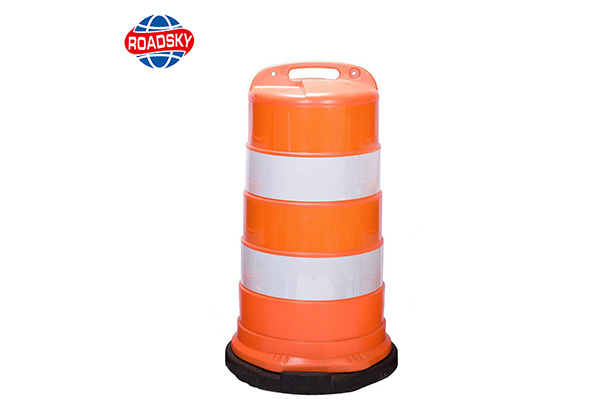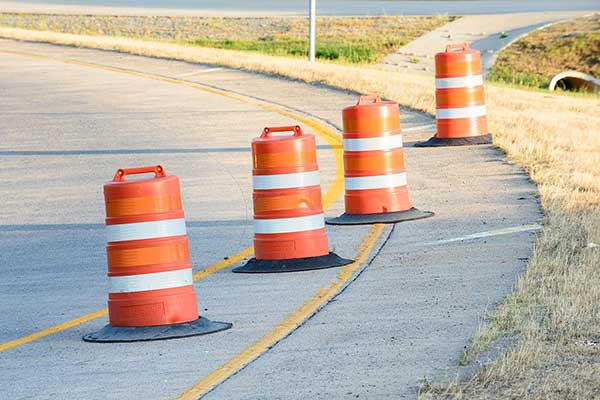What is a Traffic Barrel? A Comprehensive Guide
When driving through construction zones or other roadwork areas, you’ve likely noticed large orange barrels lining the road. These are traffic barrels, sometimes referred to as drum barricades or construction barrels. Traffic barrels are an essential part of road safety management, helping to direct vehicles, protect workers, and minimize the risk of accidents. In this article, we’ll explore what traffic barrels are, their key features, and why they are crucial for road safety.

What is a Traffic Barrel?
A traffic barrel is a large, cylindrical safety device typically made of high-density polyethylene or other durable plastics. They are designed to be highly visible and often come in bright orange with reflective stripes, making them noticeable both day and night. Unlike traffic cones, which are smaller and more easily movable, traffic barrels are more substantial, providing both visibility and some level of impact resistance in construction zones and other hazardous areas on the road.
Key Features of Traffic Barrels
- Bright Color: Traffic barrels are almost always orange, the international color for caution and alert. This color ensures that drivers can spot them easily from a distance.
- Reflective Bands: To increase visibility at night or in poor weather conditions, traffic barrels are equipped with reflective bands. These bands bounce light from vehicle headlights, alerting drivers to potential hazards ahead.
- Sturdy Material: The high-density polyethylene material makes the barrels lightweight yet durable. They can withstand weather elements, impacts from vehicles, and harsh conditions common in construction zones.
- Weighted Base: Many traffic barrels have a weighted base or can be filled with sand to increase stability, preventing them from being blown away or moved easily by wind or vehicle drafts.
- Stackable Design: For easy transport and storage, traffic barrels are designed to be stackable. This feature is important for road crews who need to deploy them quickly and efficiently.

Common Uses of Traffic Barrels
Traffic barrels are versatile tools used in various settings where safety is a priority. Here are the most common applications:
1. Construction Zones
Traffic barrels are primarily used in road construction zones to direct traffic away from workers and hazardous areas. They help create a safe boundary for construction crews, reducing the risk of accidents.
2. Lane Closures
When a lane is closed due to repairs or other roadwork, traffic barrels serve as guides to merge traffic into the appropriate lanes safely. Their size and visibility help prevent last-minute swerves, improving the flow of traffic.
3. Roadside Maintenance
In cases where roadside maintenance like mowing or utility work is taking place, traffic barrels can be used to keep drivers away from the work area. They ensure that both workers and motorists stay safe.
4. Special Events and Detours
Traffic barrels are also used for managing traffic during special events or when temporary detours are in place. Their visibility ensures that drivers can easily follow new routes, even if they’re unfamiliar with the area.

Why Are Traffic Barrels Important for Road Safety?
Traffic barrels play a critical role in road safety for both drivers and workers. Here’s why they are so important:
1. Preventing Accidents
The bright orange color and reflective bands of traffic barrels make them hard to miss, even from a distance. By clearly marking hazardous areas, they help prevent accidents by giving drivers ample time to slow down or change lanes.
2. Protecting Workers
In construction zones, road crews often work just a few feet away from moving traffic. Traffic barrels create a buffer zone between the workers and vehicles, reducing the risk of injury in the event of an accident or vehicle encroachment.
3. Guiding Traffic
By placing traffic barrels strategically, road crews can guide vehicles smoothly through construction zones, lane closures, or detours. This organization reduces confusion, lowers the chance of collisions, and improves overall traffic flow.
4. Minimizing Damage
While traffic barrels are not meant to stop vehicles entirely, their size and durability provide some level of impact resistance. In the event that a driver does hit a traffic barrel, the barrel absorbs some of the shock, potentially minimizing vehicle damage and injuries.
Traffic Barrels vs. Traffic Cones: What’s the Difference?
While both traffic barrels and traffic cones are used for guiding traffic and marking hazardous areas, there are key differences between the two:
- Size: Traffic barrels are much larger than cones, making them more visible from greater distances.
- Durability: Traffic barrels are more durable and impact-resistant, whereas traffic cones are lighter and can be knocked over more easily.
- Usage: Traffic cones are typically used for smaller-scale projects or short-term events, while traffic barrels are more commonly found in long-term construction zones or areas requiring a greater level of protection.
Conclusion
Traffic barrels are an indispensable tool in road safety, especially in construction zones or areas where traffic needs to be rerouted. Their bright color, reflective features, and sturdy design ensure that they are visible and effective at keeping both drivers and workers safe.
For more information on traffic safety equipment, you can contact us directly to get more information.

